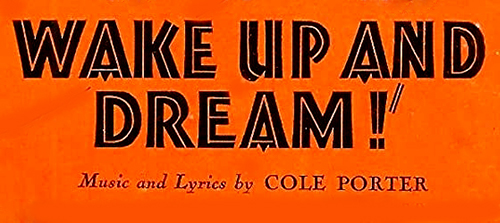Pas de biographie disponible.
Compositeur Musique additionelle Librettiste Parolier Metteur en scène Chorégraphe Producteur création Producteur version

Musical
Musique: Harold Fraser-Simon • Paroles: Harry Graham • Livret: John Hastings Turner • Production originale: 1 version mentionnée
Dispo: Résumé Liste chansons
Genèse:
Résumé: Betty et Kitty, les filles jumelles d’un vicaire du Gloucestershire, célèbrent leur 20e anniversaire, dans un style sobre et démodé. C'est à ce moment que survient leur grand-tante, Rooke Walter, arrive avec deux cadeaux: un concret, un cadeau en crêpe-de-Chine, et un plus abstrait un voyage d'un an à Londres. Quelle sœur aura quoi? Le choix doit être lié au hasard, à l'arbitraire. Pour éviter tout favoritisme, la sélection sera faite par un parfait étranger, Mr Barnaby Haddon, un homme qui inspecte l’architecture de l’église locale. Les filles apparaissent dans leur coutumes, des robes victoriennes démodées, et Barnabby est totalement séduit par Betty et son style démodé. Une fois à Londres, Betty oublie tout et devient la plus moderne des «rabat-joie». Barnaby, qui s’avère être extrêmement riche, est encore plus enchanté par la moderne Betty plutôt que la modeste. Le spectacle se termine avec des cloches de mariage dans l’air. Pendant ce temps, Kitty ne manque pas de romance, et est heureuse de se marier avec son bien-aimé Bryan Ropes.
Création: 11/11/1925 - Adelphi Theatre (Londres) - 182 représ.

Revue
Musique: Cole Porter • Paroles: Cole Porter • Livret: *** Revue • John Hastings Turner • Production originale: 1 version mentionnée
Dispo: Résumé Commentaire Génèse Liste chansons
Wake Up and Dream is a musical revue with a book by John Hastings Turner and music and lyrics by Cole Porter and others. The most famous song from the revue is the Porter standard "What Is This Thing Called Love?" The revue opened in London while Porter's Paris was still running on Broadway. Producer Charles B. Cochran asked Porter to write the score, even though in their previous dealings Porter had treated him with some discourtesy. Opening on December 30, 1929, the production was the last to open on Broadway in the 1920s.
Genèse: The piece originally was called Charles B. Cochran's 1929 Revue. Tryouts began on 5 March 1929 at the Palace Theatre in Manchester, England. It then opened on 27 March 1929 at the London Pavilion and ran for 263 performances. The production was directed by Frank Collins with choreography by Jack Buchanan, Tilly Losch, and Max Rivers, with a cast that featured Jessie Matthews, Sonnie Hale, Tillie Losch, Douglas Byng and Elsie Carlisle. After the London production closed, a Broadway production opened at the Selwyn Theatre on 30 December 1929 and closed on 26 April 1930 after 136 performances. Produced by Arch Selwyn in association with Cochran, the London director and choreographers reprised their work, and the cast featured Buchanan (replacing Hale), Matthews and Losch.
Résumé: The show was a revue with 24 sets, 500 costumes, a large international cast, and "a thread of a book." The song "Let's Do It, Let's Fall in Love" (performed in London) had "sensual choreography," and was set in front of a large African idol, with a tom-tom beat with Tilly Losch dancing and Elsie Carlisle singing in torch singer style. The elaborate ballet for the song "Wake Up and Dream" uses folklore and history. "Coppélia" is danced as seen from the wings. According to critic Brooks Atkinson of The New York Times, "A 'Gothic' number, to music by Bach, brings the reverence of the cathedral into the theatre."
Création: 30/12/1929 - American Airlines Theatre (Broadway) - 136 représ.